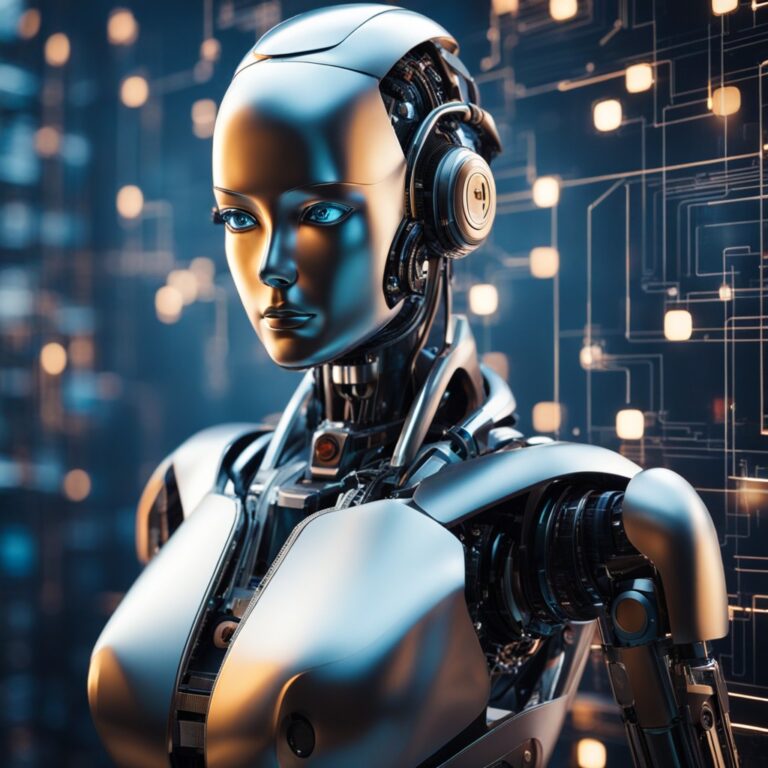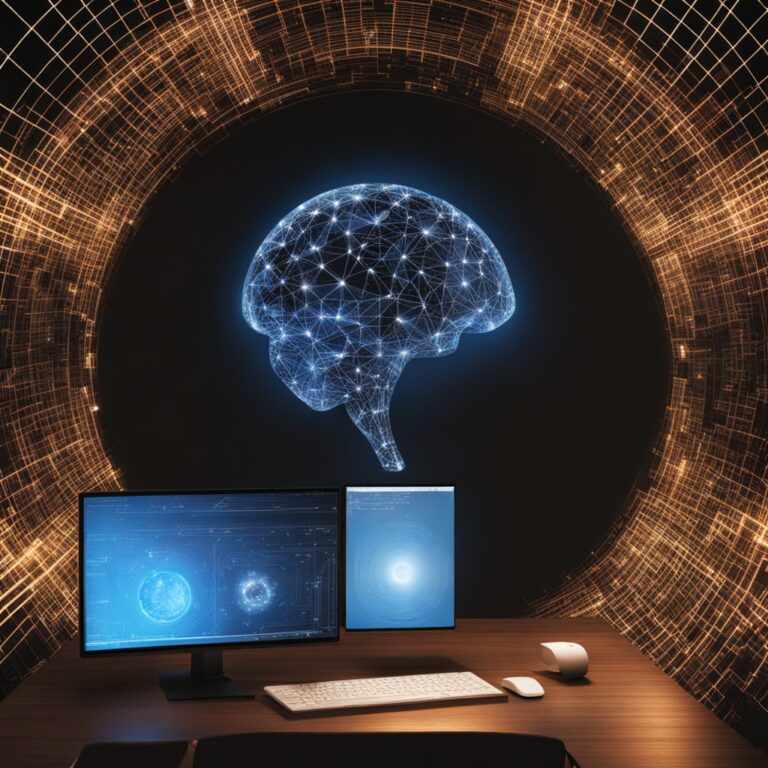A 'Godfather of AI' Requests a Group to Protect Humanity

The recent launch of ChatGPT has raised concerns among some experts about the potential dangers of artificial intelligence (AI). Geoffrey Hinton, a professor emeritus at the University of Toronto and one of the most respected researchers in the field of AI, has called for the creation of an organization to defend humanity from AI.
Hinton’s concerns are not unfounded. AI has the potential to be used for good, such as developing new medical treatments and solving complex scientific problems. However, AI also has the potential to be used for malicious purposes, such as creating autonomous weapons and developing surveillance systems that could track and monitor people without their knowledge or consent.
One of the main concerns about AI is that it could become so intelligent that it surpasses human intelligence and becomes a threat to humanity. This is known as the “superintelligence” scenario. While it is not clear whether or not superintelligence is possible, it is important to consider the potential risks and to take steps to mitigate them.
Another concern about AI is that it could be used to manipulate people’s thoughts and emotions. This could be done through social media, advertising, or other forms of communication. If AI is used to manipulate people, it could have a negative impact on democracy and society as a whole.
Given the potential dangers of AI, it is important to consider the following questions:
- What can be done to mitigate the risks of AI?
- Could the risk that AI poses ever truly be contained?
- Can artificial general intelligence (AGI) occur overnight?
Mitigating the risks of AI
There are a number of things that can be done to mitigate the risks of AI. One is to develop and implement ethical guidelines for the development and use of AI. These guidelines should be based on human values and should ensure that AI is used for good and not for harm.
Another way to mitigate the risks of AI is to develop safeguards to prevent AI from being used for malicious purposes. For example, autonomous weapons could be equipped with safeguards that prevent them from being used without human intervention.

Artificial intelligence (AI) is a powerful technology with the potential to revolutionize many industries and aspects of our lives. However, it is important to be aware of the potential risks associated with AI and to take steps to mitigate these risks.
Here are some things that can be done to mitigate the risks of AI:
- AI systems should be transparent, meaning that it should be possible to understand how they work and why they make the decisions that they do. This is important for ensuring accountability and for building trust in AI systems.
- AI systems should be fair, meaning that they should not discriminate against any particular group or individual. This is important for ensuring that everyone benefits from the benefits of AI.
AI systems should respect the privacy of users. This means that AI systems should not collect or use personal data without the user’s consent.
AI systems should be safe, meaning that they should not pose a risk to people or property. This is important for ensuring that AI systems can be used safely and responsibly.
In addition to these general principles, there are a number of specific things that can be done to mitigate the risks of AI. For example, AI developers can use techniques such as differential privacy and adversarial training to mitigate bias in AI systems. AI developers can also work with ethicists and social scientists to ensure that AI systems are aligned with human values.
It is also important to have clear and comprehensive regulations in place to govern the development and use of AI. These regulations should address issues such as data privacy, liability, and transparency.
By taking these steps, we can help to mitigate the risks of AI and ensure that it is used for good and not for harm.
Here are some additional thoughts on mitigating the risks of AI:
This will help to ensure that AI systems are representative of the population and that they do not reflect the biases of any particular group.
This will help to raise awareness of the potential risks and benefits of AI and to develop a shared understanding of how AI should be used.
This includes developing clear legal and regulatory frameworks for AI.
Mitigating the risks of AI is essential for ensuring that AI is used for good and not for harm. By taking the steps outlined above, we can help to create a future where AI benefits everyone.
Can the risk that AI poses ever truly be contained?
It is difficult to say whether or not the risk that AI poses can ever truly be contained. There is always the possibility that someone will develop AI for malicious purposes. Additionally, it is possible that AI could become so intelligent that it is able to overcome any safeguards that are put in place.
Despite these challenges, it is important to take steps to mitigate the risks of AI. By developing ethical guidelines and safeguards, we can reduce the likelihood of AI being used for malicious purposes.

Whether or not the risk that AI poses can ever truly be contained is a complex question with no easy answer. On the one hand, AI is a powerful technology with the potential to cause significant harm if it is not used responsibly. On the other hand, we have a long history of developing and deploying technologies that pose some degree of risk, and we have generally been successful in managing these risks.
One of the key challenges to containing the risks of AI is that it is a rapidly developing technology. New advances in AI are being made all the time, and it is difficult to predict how these advances will be used. Additionally, AI systems are often complex and opaque, making it difficult to understand how they work and why they make the decisions that they do.
Another challenge is that AI systems are often used in high-stakes applications, such as autonomous vehicles and medical diagnosis. If an AI system fails in one of these applications, the consequences could be catastrophic.
Despite these challenges, there are a number of things that can be done to contain the risks of AI. These include:
These guidelines should address issues such as fairness, privacy, and safety.
This research should focus on developing methods to make AI systems more reliable and predictable, and to prevent them from being used for malicious purposes.
This will help people to make informed decisions about how AI is used in their lives.
It is important to note that there is no guarantee that these measures will be successful in containing the risks of AI. However, by taking these steps, we can reduce the risk of AI being used for harm and increase the likelihood that AI will be used for good.
It is possible that the risk that AI poses can never truly be contained. However, there are a number of things that can be done to reduce this risk. By developing and enforcing ethical guidelines, investing in research on AI safety, and educating the public about AI, we can help to ensure that AI is used for good and not for harm.
Can artificial general intelligence (AGI) occur overnight?
It is unlikely that AGI will occur overnight. AGI is a very complex problem and it is not clear how to achieve it. However, it is important to note that progress in AI is being made at a rapid pace. It is possible that AGI could be achieved within our lifetimes.
AGI could occur overnight if there is a sudden breakthrough in AI research. However, it is more likely that AGI will be achieved gradually, as researchers develop new AI techniques and algorithms.

No, artificial general intelligence (AGI) cannot occur overnight. AGI is a hypothetical type of AI that would have the same general cognitive abilities as a human being. This would include the ability to reason, learn, and adapt to new situations.
AGI is still a long way off, as there are many technical challenges that need to be overcome before it can be achieved. One of the biggest challenges is developing AI systems that can learn and adapt in the same way that humans do. Humans are able to learn from a wide variety of experiences, and they are able to generalize their knowledge to new situations. AI systems are not yet able to do this to the same degree.
Another challenge is developing AI systems that are able to understand and reason about the world in the same way that humans do. Humans have a natural understanding of the world, and they are able to use their knowledge to make informed decisions. AI systems are not yet able to do this to the same degree.
Despite the challenges, there has been significant progress in AI research in recent years. This progress has led some experts to believe that AGI could be achieved within the next few decades. However, other experts believe that AGI is still centuries away.
It is important to note that AGI is not a binary event. It is more likely that AGI will emerge gradually, as AI systems become more and more capable. This means that we have time to prepare for the potential risks and benefits of AGI.
Here are some of the potential risks of AGI:
For example, AGI could be used to develop autonomous weapons or to create sophisticated surveillance systems.
If AGI is able to perform many of the jobs that are currently done by humans, this could lead to widespread unemployment.
If AGI becomes more intelligent than humans, it is possible that it could decide that humans are a threat and take steps to eliminate us.
It is important to note that these are just potential risks. It is also possible that AGI will have many positive benefits. For example, AGI could help us to solve some of the world’s most pressing problems, such as climate change and poverty.
Overall, it is unlikely that AGI will occur overnight. However, it is important to be aware of the potential risks and benefits of AGI so that we can be prepared for its eventual arrival.
Conclusion
The launch of ChatGPT has raised concerns among some experts about the potential dangers of AI. Geoffrey Hinton, a professor emeritus at the University of Toronto and one of the most respected researchers in the field of AI, has called for the creation of an organization to defend humanity from AI.
Hinton’s concerns are not unfounded. AI has the potential to be used for good, but it also has the potential to be used for malicious purposes. It is important to consider the potential risks of AI and to take steps to mitigate them.
There are a number of things that can be done to mitigate the risks of AI, such as developing ethical guidelines and safeguards. It is difficult to say whether or not the risk that AI poses can ever truly be contained, but it is important to take steps to reduce the likelihood of AI being used for malicious purposes.
AGI is a very complex problem and it is not clear how to achieve it. However, it is important to note that progress in AI is being made at a rapid pace. It is possible that AGI could be achieved within our lifetimes.
Overall, it is important to be aware of the potential risks of AI and to take steps to mitigate them. By developing ethical guidelines and safeguards, and by conducting research on the risks of AI, we can help to ensure that AI is used for good and not for harm.
Additional thoughts
The simultaneous discoveries of calculus by Gottfried Leibniz and Isaac Newton are a good example of how multiple people can make the same discovery at the same time. This is because the time was right for such a discovery to be made. The mathematical and scientific knowledge of the time had advanced to a point where calculus was possible.
In a similar way, it is possible that the time is right for AGI to be achieved. AI research. Kindly comment your thought.